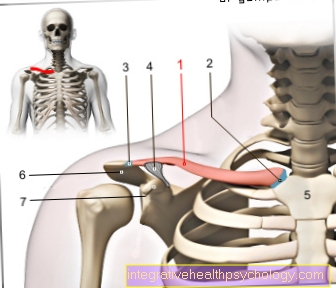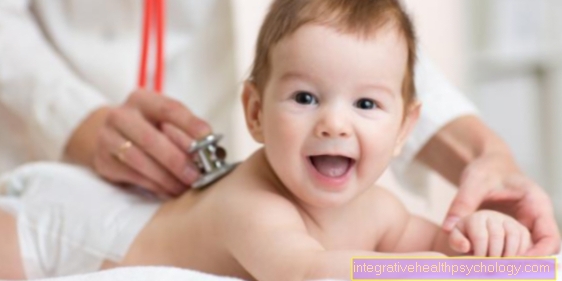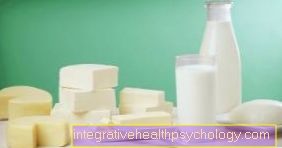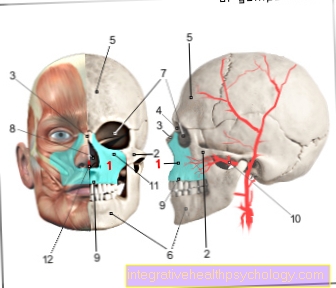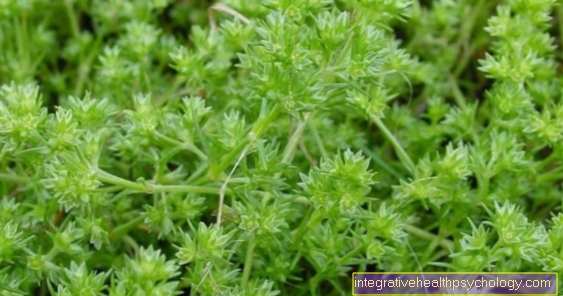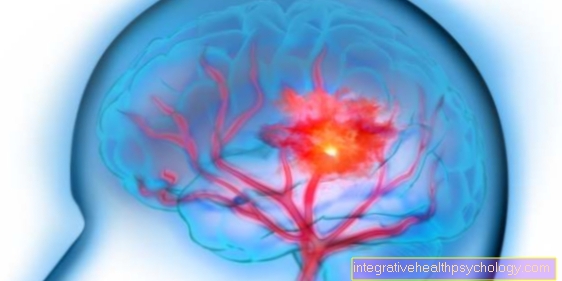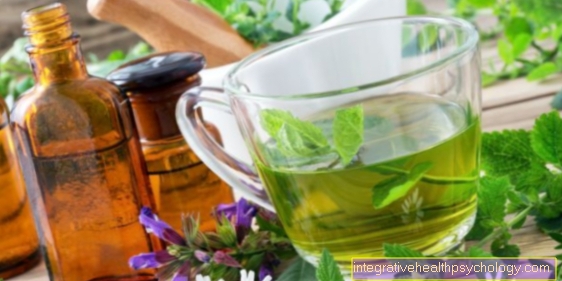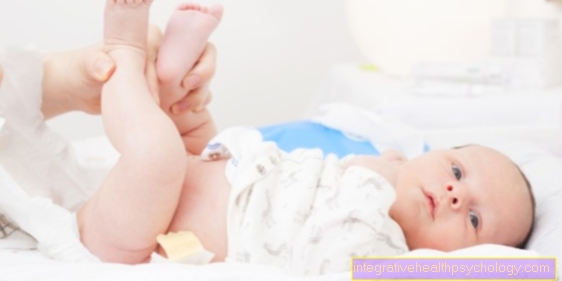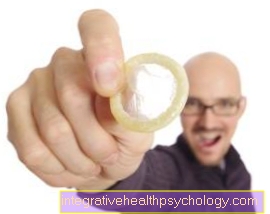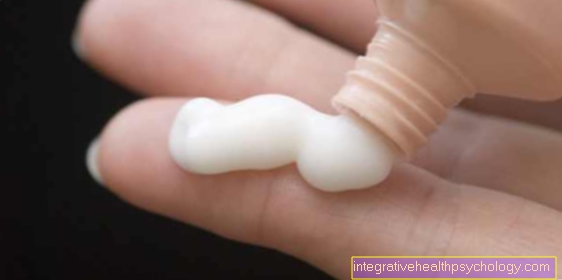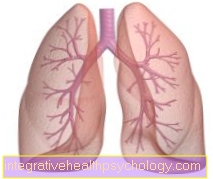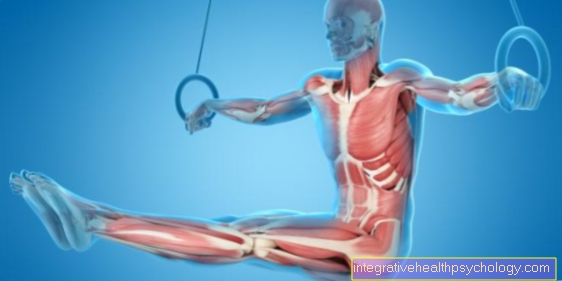Poisoning in children
General
The poisoning (intoxication) represents a dangerous emergency situation in children. While in small children, e.g. If they have reached their parents' medicine cabinet, it is often not possible to determine which medicines or agents were taken, alcohol intoxication is the most common emergency for older children and adolescents.

Symptoms
Poisoning in children often occurs between the ages of 1-4 years and is mainly observed in boys. Around 1000 cases per year in Germany are life-threatening for the children affected and around 20 have a fatal outcome. In most cases of poisoning, only mild or no symptoms are perceptible. The symptoms that occur in the context of poisoning can vary greatly depending on the substance ingested. Above all, disorders of the central nervous system in the form of changes in consciousness, newly occurring behavioral abnormalities or changes in the child's gait and motor skills can indicate incipient or, in severe cases, advanced poisoning.
The first signs in children are often nausea, malaise, vomiting or diarrhea. In addition, in many cases an increased flow of sweat or saliva, accompanied by increased excitability, can occur. In addition, frequent symptoms include disorders of the cardiovascular system, such as an increase or decrease in breathing or heart rate. In particularly bad cases, the affected child can develop symptoms of shock with acute respiratory failure. Changes to the skin can also occur in the context of poisoning. These include new skin rashes or hair loss. In many children, changes in the pupils or impaired vision can also be observed. It should be noted that many cases of poisoning are initially completely symptom-free and can only cause the first specific abnormalities after 24 to 48 hours. Therefore, if there is a strong suspicion of poisoning in children, consistent monitoring is essential.
Emergency number
If there is a suspicion of acute poisoning in children, the emergency doctor should be alerted so that sufficient maintenance of the child's circulation can be guaranteed. In addition, contact is made with the poison control center. The national number is made up of the area code plus 19240. Here, precise information should be given about the age, the current clinical condition, the substance presumably absorbed, the amount, as well as the time and route of absorption of the substance, so that a sufficient and comprehensive recommendation and procedure can be made.
Initial measures
If the substance and amount are unclear, either vomiting must be induced or the substance must be bound in the stomach by giving charcoal, possibly via a gastric tube. On the one hand, the type of substance and on the other hand the time elapsed after ingestion are decisive. Substances that have just been taken can be transported out of the body by vomiting. Substances that foam strongly, such as dish soap, must not be vomited.
In extreme situations, blood washing through dialysis treatment is the only saving intensive care measure. After parents have discovered the poisoning, they should definitely call an emergency doctor. Independent vomiting should not be induced. Vomit should be kept and shown to the emergency services. Until it arrives, the child must be reassured and the vital parameters checked regularly.
Poisoning with cigarettes
Poisoning caused by nicotine is one of the most common poisonings in small children. A commercial cigarette with 1g of tobacco contains approximately 15-25 mg of nicotine. This dose can be life threatening for a toddler. However, cigarette poisoning is usually not fatal, as the extremely acidic gastric juice prevents the nicotine from becoming soluble and from being absorbed quickly. The nicotine absorbed slowly over the course of the treatment can then usually be eliminated very easily by the liver.
The first symptoms of cigarette poisoning manifest themselves in children only after 3-4 hours. Symptoms such as malaise, nausea, vomiting, paleness, restlessness or increased sweating can occur. When consuming cigarette butts and the occurrence of the symptoms mentioned above, there is a strict indication that the toxin should be removed immediately by gastric lavage. If the cigarette was more than 4 hours ago, the recorded length is less than 2 cm and no symptoms appear, all that is necessary is observation without therapeutic intervention. In the case of very severe poisoning, children can rarely experience cardiovascular disorders or seizures.
Poisoning with yew
The yew tree is a conifer that is native to Central and Southern Europe and grows mainly on calcareous soil. The yew tree bears dark red to black-brown seeds that are very poisonous for children and adults. Since the seeds appear like a berry, there is a great danger that young children will pick and eat them. The pulp, which tastes very slimy and sweet, poses no danger. The seed coat and the needles of the yew tree, on the other hand, contain a very poisonous toxin, which is released when chewed. Even one or two chewed seeds represent a critical dose for the children, which can lead to life-threatening poisoning.
A few hours after consuming the seeds, you experience dry mouth, reddening of the lips, and dilation of the pupils. In addition, stomach pain, nausea and vomiting can occur. In particularly severe cases, in addition to a loss of consciousness, seizures or serious cardiovascular disorders can occur. If there is a suspicion of poisoning by yew, the affected children must be admitted to a clinic immediately so that the vital body functions can be ensured and the poison can be eliminated quickly.
Poisoning with slug pellets
Poisoning in children caused by slug pellets is in most cases life-threatening and requires immediate medical attention. The slug pellet is one of the insecticides. It is a preparation that is used to kill and drive away insects. The slug pellets are ingested by the children through their mouths, either in solid form or as a concentrated solution. Just one sip can endanger the life of young children. In the context of poisoning, the children complain of nausea, vomiting, increased salivation, dizziness, drowsiness or disturbances of consciousness.
Since there is a high risk of an acute disturbance of the cardiovascular system, if there is any suspicion, an appointment should be made at the children's clinic immediately or the emergency call should be alerted if the general condition has deteriorated significantly. As a first measure, it is recommended to remove the remains of the slug pellets from the child's mouth immediately and rinse the mouth. Vomiting should not be induced as it is a corrosive poison which can cause additional damage to the upper digestive tract. Intensive medical treatment can take place in the clinic. Here, particular attention is paid to a high fluid intake with increased intestinal irrigation in order to sufficiently eliminate the poison.
Poisoning with blue grain
Blue corn is an artificial fertilizer for plants that is often used in the home garden. Small children who are curious and explore their surroundings can quickly become aware of the little blue spheres and ingest them. Blue grain consists of nitrogen, potash and phosphorus and, depending on the amount ingested, as well as the sensitivity and size of the child, can lead to very variable symptoms of intoxication. From slight nausea and vomiting, it can lead to bloody stools up to a life-threatening deterioration of the child’s general condition, which in the worst case can be fatal. There is a particularly high risk of poisoning if the blue grain is dissolved in water and then left in a watering can or a glass.


